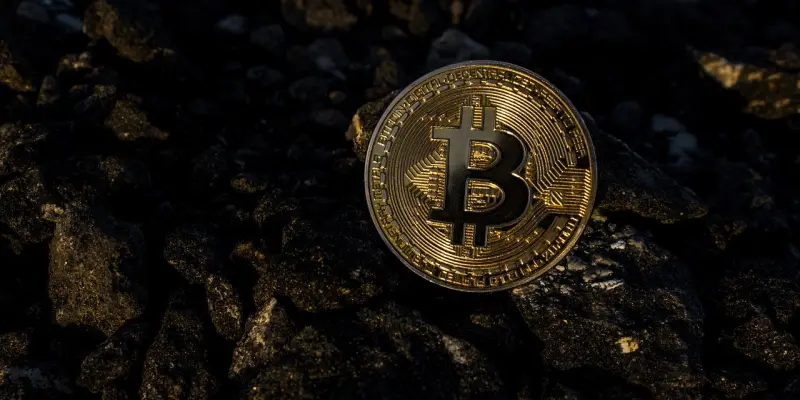In the rapidly evolving world of digital finance, the security of cryptocurrency assets remains a critical concern for users globally. With the introduction of new and sophisticated cyber threats, it is paramount to stay informed about potential risks. One such threat that has recently been detected is the Crocodilus malware. This advanced piece of malware poses a significant risk to Android users by targeting their crypto assets.
1. Overview of Crocodilus Malware
Crocodilus is a sophisticated malware specifically designed to steal digital assets from Android devices. The malware operates by using overlays, remote access, and social engineering techniques to take control of the device and drain the crypto wallet. Discovered by the fraud prevention firm Threat Fabric, Crocodilus primarily targets Android 13 devices and newer versions. Since its discovery, it has predominantly affected users in Spain and Turkey, but experts predict it will spread globally.
The malware’s code includes various crocodile references, which is how it earned its name. Unlike traditional malware, Crocodilus integrates deeply with the infected device to gain complete control. It employs a range of tactics to deceive users, making it particularly dangerous for those who are not vigilant about their cybersecurity practices.
2. Methods of Infection
Crocodilus spreads through several common channels that are also used by other malware types. One of the primary methods involves disguising itself as a legitimate cryptocurrency-related app. Users may inadvertently download the malicious app from the Google Play Store or third-party app-hosting sites, as Crocodilus can bypass Google Play Store’s safety scanners. This ability to slip through official channels makes it particularly insidious. Another vector for infection includes SMS promotions that lure users into clicking on suspicious links. These links often direct the user to a page where the malware is downloaded onto their device. Similarly, malicious ads on websites, especially those related to adult content or software piracy, can trick users into tapping and inadvertently installing the malware. Additionally, phishing attempts via emails that impersonate cryptocurrency exchanges are also common methods of spreading Crocodilus.
3. How Crocodilus Operates
Once Crocodilus infects a device, it requests accessibility service permissions. If granted, these permissions connect Crocodilus to its command-and-control (C2) server, enabling attackers to display screen overlays, track keystrokes, and remotely access the device. This allows the malware to execute a wide range of commands, including taking over SMS functions, altering text, and controlling the device’s camera or screen recorder. One of the malware’s most deceptive tactics involves displaying a fake overlay when users log into their cryptocurrency wallet app. This overlay prompts users to back up their wallet key by entering their seed phrase within a certain timeframe, threatening that the app will reset otherwise. This tactic effectively captures sensitive information, allowing attackers to steal the victim’s assets. Additionally, Crocodilus can bypass two-factor authentication processes by recording verification codes and sending them to its C2 server.
4. If You Become a Victim
If you suspect that you have fallen victim to a Crocodilus attack, immediate action is crucial. First, isolate your device by disconnecting it from Wi-Fi or data networks and turning it off. If possible, remove the battery to ensure the device is completely shut down. This helps prevent the malware from further communicating with its C2 server.
Next, recover your assets by using your wallet’s seed phrase on an uncompromised device. Ensure that this recovery process is done in a secure environment to avoid further compromise. Unfortunately, continuing to use a compromised device poses significant risks. Therefore, transferring to a new device and performing a factory reset on the infected one is advisable. Additionally, report the incident to relevant authorities, especially if the malicious app was downloaded from official sources like the Google Play Store.
5. Detecting a Crocodilus Attack
Regular vigilance can go a long way in protecting your cryptocurrencies from threats like Crocodilus. One of the main indicators of infection is unusual app activity. Monitor your device activity tracker for any unexpected behavior in financial or banking apps. Another effective method is reviewing app permissions regularly, paying close attention to those that request accessibility permissions, which are crucial for Crocodilus to operate.
An increased rate of battery drain is another potential sign of infection. Malware often runs processes in the background, which can significantly impact battery life. Additionally, monitoring data usage can reveal spikes that indicate the continual transmission of data to the malware’s C2 server. Being aware of these signs can help in early detection and mitigation of the threat.
6. Preventing a Crocodilus Hack
In the fast-changing landscape of digital finance, ensuring the security of cryptocurrency assets continues to be a vital issue for users around the globe. As cyber threats become increasingly sophisticated, it is crucial to stay vigilant and informed about the potential dangers that could compromise valuable digital assets. A recently identified threat that has garnered attention is the Crocodilus malware. This highly advanced malware represents a major risk to Android users by specifically targeting their cryptocurrency holdings. The emergence of such threats underscores the importance of robust cybersecurity measures. Users must be proactive in protecting their digital investments. Ensuring that software and applications are up to date, using multi-factor authentication, and relying on trusted security solutions can aid in safeguarding assets from malicious attacks. Education and awareness about these evolving threats remain essential. Being informed about potential risks and understanding the necessary precautions can significantly reduce the likelihood of falling victim to such sophisticated cyber threats like Crocodilus. In a rapidly evolving digital finance world, these measures are indispensable in securing cryptocurrency holdings.

